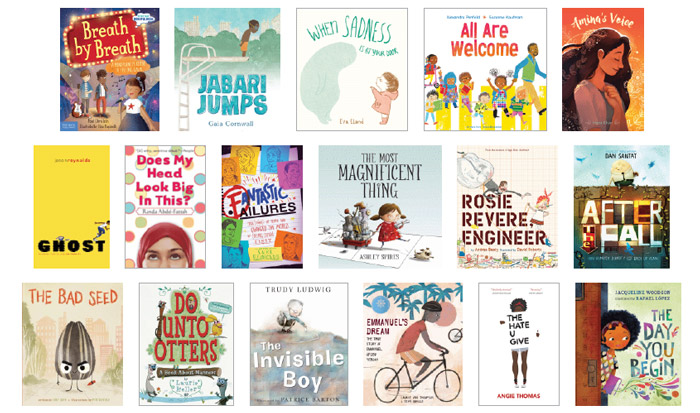“Treat others the way you want to be treated.” “If you can’t say anything nice, don’t say anything at all.” “If you fall off the horse, get back on and try again.” For most of us, these Golden Rules have guided our emotions and actions since childhood. We learned them from family members, teachers, movies, and books, and are all examples of social-emotional learning. Most children’s literature has a moral at the end of the story, or allows you to follow along with the struggles of the characters to learn from them. Throughout history, books have provided social-emotional learning and other types of therapy. Using books in a therapeutic way is better known as bibliotherapy, or using literature as a guide to gain understanding and help with problem-solving.1
Social-emotional learning, or SEL, has become popular in schools in recent years. SEL is “the process through which children and adults acquire and effectively apply the knowledge, attitudes, and skills necessary to understand and manage emotions, set and achieve positive goals, feel and show empathy for others, establish and maintain positive relationships, and make responsible decisions.”2 Themes of SEL include empathy, impulse control, emotion recognition, emotion management, communication, assertiveness, and problem-solving.3 These are skills that need to be taught and retaught throughout students’ educational career.
It can be easy to assume that all students have learned social and emotional skills at home or in primary school; however, teaching SEL throughout all grade levels has benefits inside and outside of school. “Social-emotional learning gives tomorrow’s workforce the tools for success, while educators find it contributes to a positive school climate and increased academic success. Beyond immediate outcomes in the classroom, SEL prepares employees to solve problems, manage emotions, and communicate.”4 If you want to implement SEL to improve school climate and culture, address bullying, provide students with tools to manage their emotions, teach problem-solving skills, or promote good mental health, there is a book that can help.

How can literature teach these crucial social and emotional skills? Teachers can use young adult and children’s literature as tools to teach SEL and help “guide a child’s thinking, instill moral values, strengthen personal character, and shape behavior.”5 Literature can be a part of any school’s SEL initiatives or curriculum. It can promote SEL through read-alouds, group discussion, journal writing, problem-solving, inquiry, and across disciplinary learning. One way in which literature can be used to promote SEL is when dealing with failure. Success is emphasized so much today that it can cause students a great deal of distress when they encounter failure or setbacks. Literature can help teach students ways to deal with failure. All famous scientists, inventors, and athletes in history experienced failure or faced obstacles that they had to overcome. Biographies or mentor texts about famous failures can help teach students how to overcome obstacles, be resilient, and not see failure as a negative process. “In addition to discussing individuals’ accomplishments, try to emphasize the process, frustrations, state of mind, and points of learning along the way. If you point out examples frequently, students can learn to model and practice resilient thought, words and actions in their own lives.”6
Using literature to teach SEL works exceptionally well because “Through the imaginative process that reading involves, children have the opportunity to do what they often cannot do in real life—become thoroughly involved in the inner lives of others, better understand them, and eventually become more aware of themselves.” 7 Let Mackin help you select the best titles to support your school’s SEL initiatives, inquiry units, or curriculum. Our classroom specialists can help find age-appropriate titles that allow your students to see themselves, understand the perspectives of others, find solutions, and manage their emotions.
Mackin Recommends These SEL Titles:

References
1 Ludwig, T. (2012). Using Children’s Literature to Build Social-Emotional Skills. Committee for Children. Retrieved by https://www.cfchildren.org/blog/2012/04/using-childrens-literature-to-build-social-emotional-skills/
2 CASEL, 2019. What is SEL? Retrieved from https://casel.org/what-is-sel/.
3 Committee for Children (2019). Discover the Power of Social-Emotional Learning. Retrieved from https://www.cfchildren.org/about-us/what-is-sel/
4 Committee for Children
5 Ludwig, T.
6 Pirzada, C. (2018). 3 Tips to Incorporate Social-Emotional Learning Into Everyday Literacy Instruction. Retrieved from https://www.edsurge.com/news/2018-06-18-3-tips-to-incorporate-social-emotional-learning-into-everyday-literacy-instruction
7 Ludwig, T.






